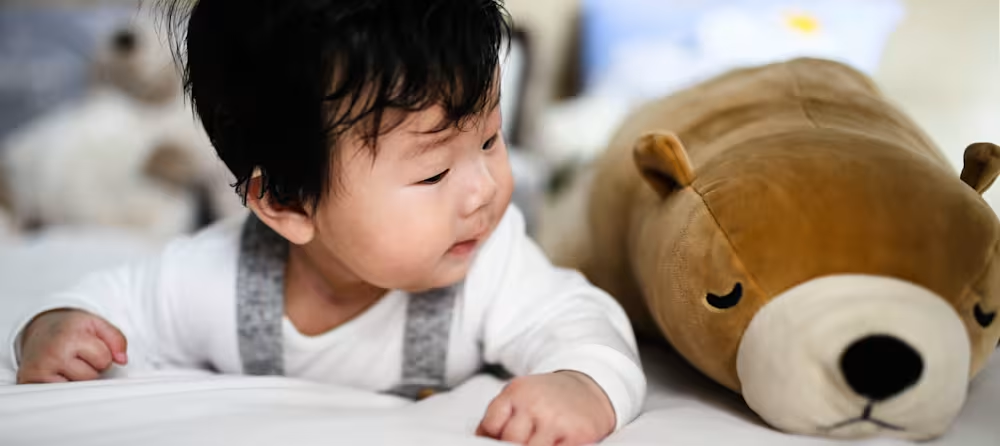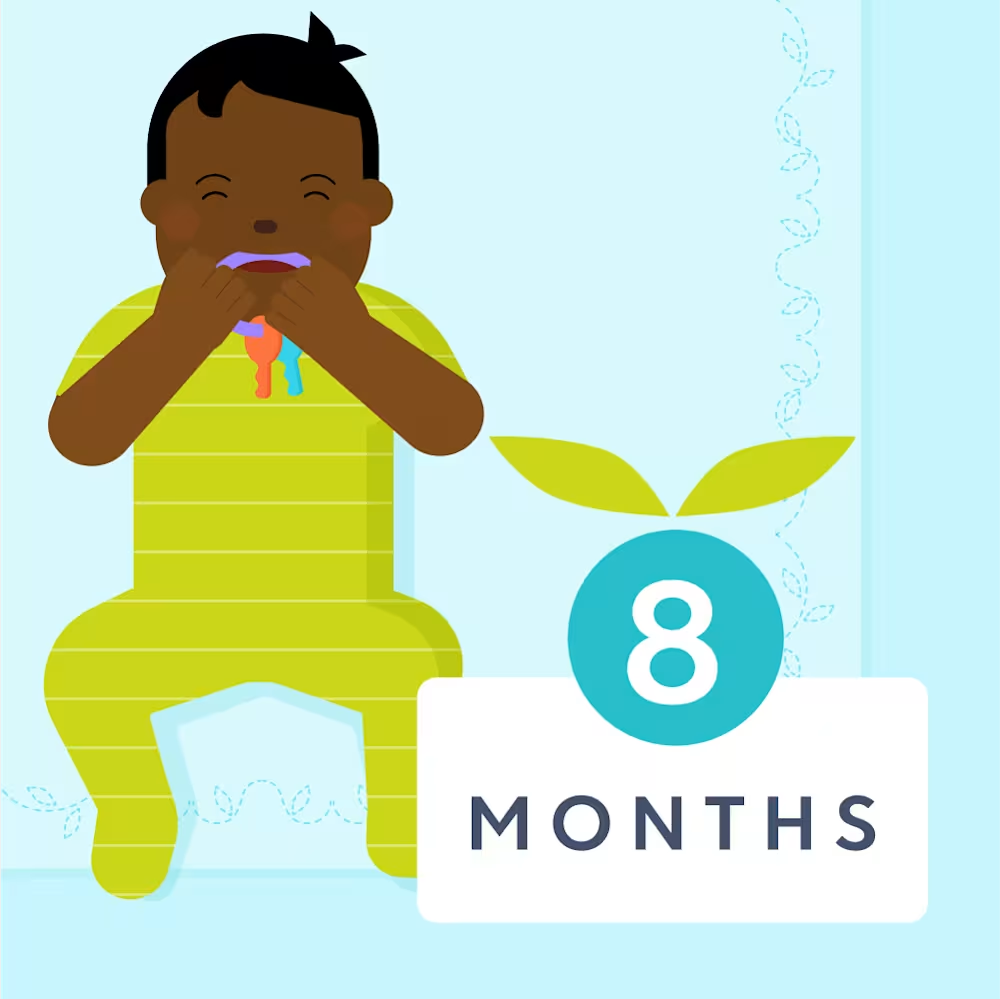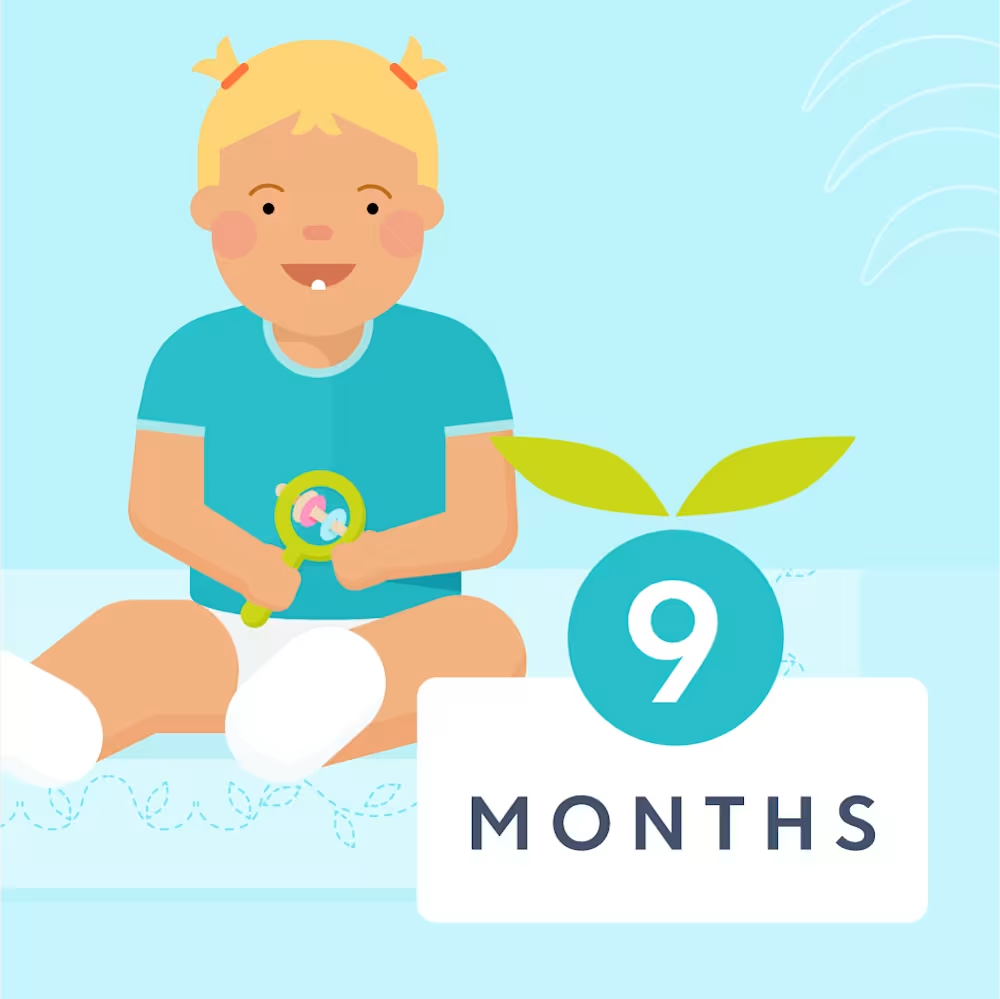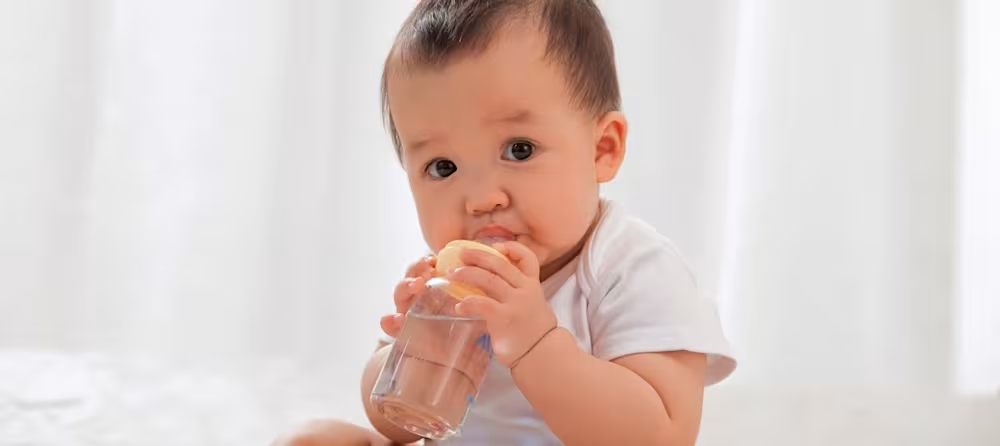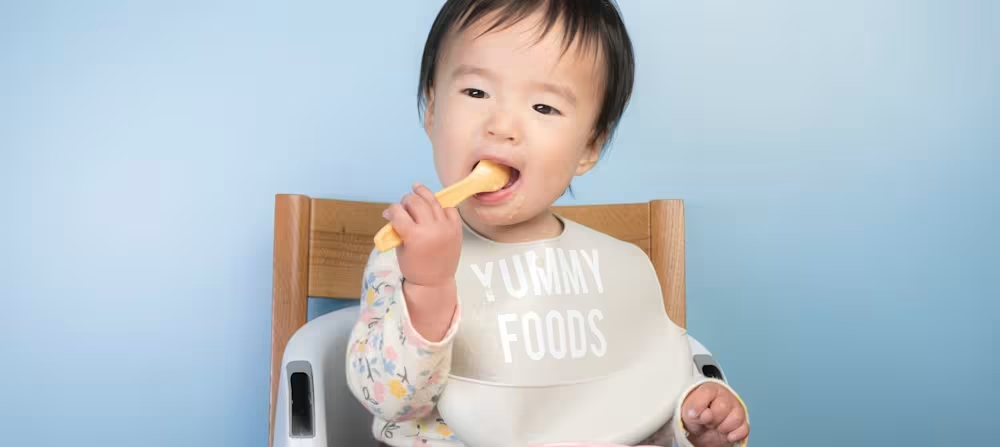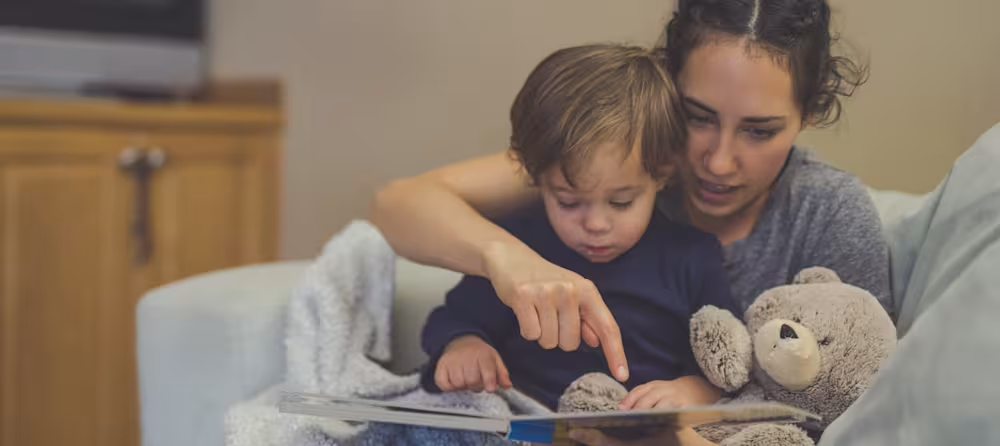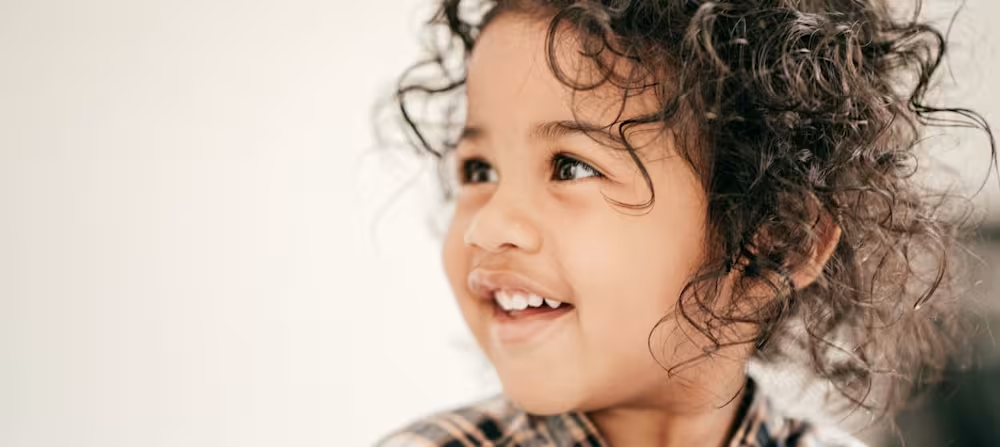8 month old baby milestones: Development, growth, speech, language
Updated Dec 29, 2025
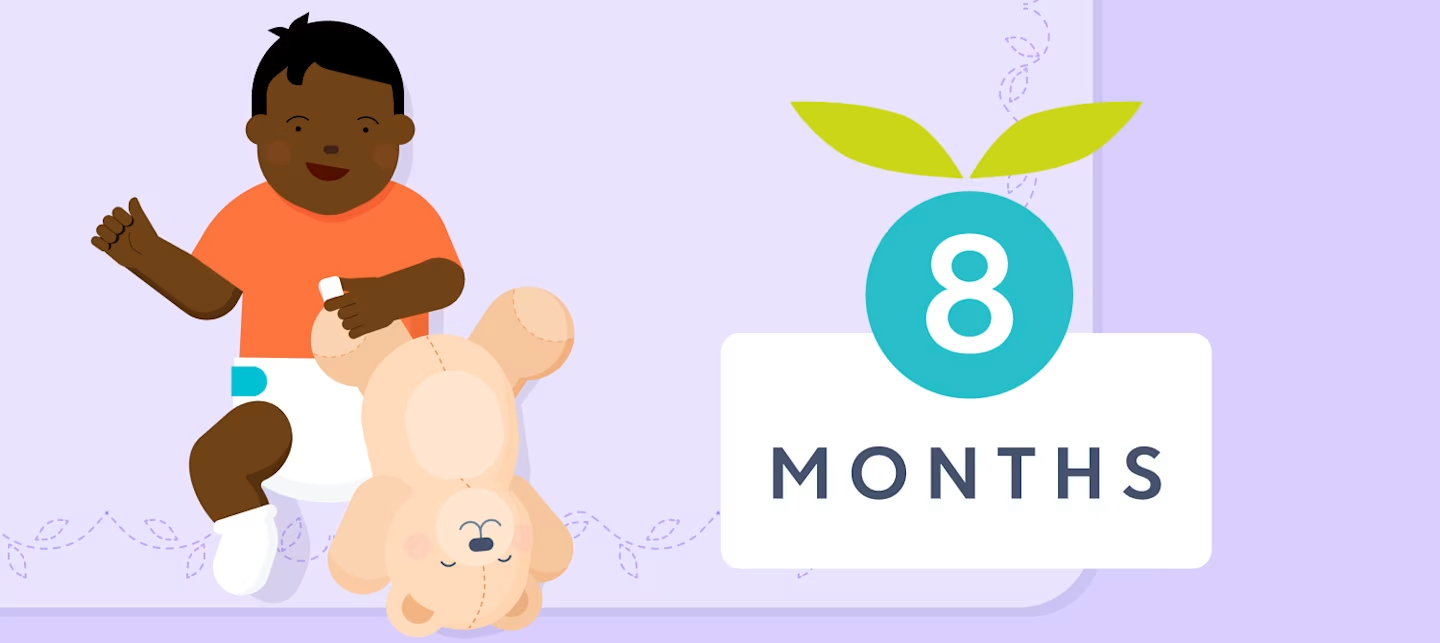
Babies at 8 months are learning and growing so much! At this age, little ones are working on babbling, can sit up independently, and may even begin to be able to feed themselves thanks to developing a pincer grasp. Your child likely recognizes their name now too!
In this article, we’ll take you through the milestones you can expect from 33 - 37 week old babies, give you a handy 8 month old development checklist, and provide useful tips to help ensure your little one is learning and growing as much as possible.
Editor's note
When we discuss babies and development at Huckleberry, we use their adjusted age (vs. actual age). Not all babies will reach 8 month old milestones simultaneously — and that’s normal. There’s a wide spectrum when it comes to how fast babies grow and develop. While many infants do reach these milestones between 33 and 37 weeks, this isn’t always the case. If you have any concerns or questions about your child’s development, reach out to their pediatrician.
Table of Contents
8 month old baby milestones at a glance
Development:
8 month developmental milestones often include physical skills like sitting independently without support, rolling both ways (even in their sleep!), and possibly some pre-crawling or crawling movements though there’s a wide range of normal when it comes to infant mobility.
On the speech and language front, babies at 8 months often make noises to get your attention and can comprehend a few simple words (including their name!). Babbling at this age usually mimics intelligible speech, including rhythm and sound variation. Even if babies can say words like “mama” and “dada” now, they often don’t connect meaning to them until closer to their first birthday.
Sleep:
At 8 months, babies get around 14 hours of total sleep per 24 hours. This breaks down to about 11 - 12 hours overnight and then 2 - 3 hours of daytime sleep. 8 months is around the age that many babies can stay up for longer periods, so your little one may be on a 3-nap schedule now or have already transitioned to a 2-nap schedule. At 33 - 37 weeks, babies can usually comfortably stay awake for 2.25 - 3.5 hours in between naps.
Note that sleep requirements vary from baby to baby and there's a wide range of what's normal and healthy. If your child’s sleep patterns don’t align with these recommendations, that’s OK! These suggestions are guidelines and it's just as important to monitor your child's mood and energy to make sure they're getting sufficient sleep.
If your child is taking short naps, having difficulty getting to sleep, and experiencing more frequent night wakings where time awake can last for long periods, they may have hit a period of challenging sleep called the (also referred to as the 9 month sleep regression). If this sounds like your little one, rest assured this phase won’t last forever! Sleep regressions typically last for 2 - 6 weeks.
However, families tend to develop new routines during this time as a way to manage this phase. Then these routines often carry the risk of disturbing sleep over a longer period. For example, if a child who was able to fall asleep on their own starts requiring rocking to sleep, this change can frequently lead to more instances of waking up during the night.
Fostering independent sleep habits can help reset a baby's bedtime routine expectations, and return to encouraging your little one to fall asleep on their own once again. Many parents choose to accomplish this through .
If you’d like personalized sleep guidance for your little one, consider submitting for a sleep plan through . Our step-by-step plans are tailored to your child’s needs as well as your family’s goals.
Feeding:
At 8 months, babies should still be mostly consuming breast milk or formula to meet their nutritional needs. This often looks like 4 - 5 feeds per day, roughly equaling of breast milk or formula per day.
This is also an age where babies often add more solid foods to their diet with purees or table foods via . A typical day may include 1 - 3 solid food meals. At this point, it’s expected that little ones are experimenting with touching, tasting, and licking table foods and purees. This is normal — and messy!
Try not to focus on how much they’re consuming in favor of exploring new textures and flavors. Offer a wide variety of healthy foods and continue offering them in the future even if your baby doesn’t seem to “like” something at first. It can take many exposures [] for a little one to accept a new food!
Growth:
Babies between 7 and 9 months [] typically have a weight gain of .5 - 1 pound per month and usually grow about .5 inches in height per month.
Note that it can be normal for your little one to grow more or less than this between 33 - 37 weeks. At well-baby visits, your child’s doctor will chart their height and weight to check that they’re growing at a regular pace and can pinpoint any trends that need attention.
If you have concerns about your baby at 8 months, consult their pediatrician.
8 month development milestones
Physical development
Gross motor milestones
Rolling: At 8 months, most babies can roll over from back to front and back again while lying down, even in their sleep [].
Sit without support: Babies at 8 months can typically sit independently [] without support, even though they may still topple over occasionally and catch themselves with their arms. At this age, they’re typically experimenting with leaning over to reach for objects while sitting. They are likely also working on being able to get into a sitting position from laying on the floor by rolling onto their tummy, pushing up with their arms, and inching into sitting.
Crawling: Some 8 month old babies are on the move and may start crawling (on their belly) or scooting (on their bottom) or have adopted another at this age. However, there’s a wide range of normal when it comes to crawling (7 - 10 months) [] which means 8 months is on the early end for this motor milestone. And some babies never crawl!
Pulling to stand: Being able to get into a standing position by pulling up on a sturdy piece of furniture is often a precursor to standing independently and walking. The expected age range for this milestone is 7 - 12 months [], so a few babies may be able to do this already but don’t fret if your child isn’t there yet.
Fine motor milestones
Manipulate objects: Expected 8 month fine motor milestones include the ability to manipulate objects and toys a little bit better now. For example, they may bang two toys together, drop or throw things outside of their crib, or rake food towards (or away from!) them with their hands.
Improved hand-eye coordination at this age means movements are more refined and intentional. Babies at this age can usually move objects from one hand to the other and bring items directly to their mouth too.
Pincer grasp: Your baby may begin to pick up objects with their thumb and forefinger (called pincer grasp) at around 8 months. However, this skill isn’t typically fully developed until around 9 months []. Pincer grasp is an exciting development because this motor skill allows them to pick up small objects which can help them feed themselves table foods.
Speech development
Babbling: At 8 months, babbling may start to sound more and more like a conversation [] with its own rhythm and tones that resemble adult speech. Your little one may even start babbling words like “mama” or “dada.” As exciting as this is, at this age they likely aren’t connecting meaning to the words just yet. It’s not personal, though — these words are fun to say and practice. By your little one’s first birthday, you might expect them to attach meaning [] to their first words.
Responding to their name: Typical 8 month old speech milestones may mean your little one responds to their own name [] when they hear it. Responding may mean they look at you or turn around when you call for them.
Sign language: If you’ve been teaching your little one , around the 8-month mark they may be able to start signing back to you. This usually starts with the use of a couple of simple signs, like the sign for “more.”
Language comprehension: 8 month old language development can include the ability to link meaning [] with some simple words. Look for your little one’s reaction when you say certain things like “eat” or “dog.” If they seem to react — like looking at the dog after you say the word — that’s typically an indication that they understand, at least to some extent.
Facial expressions: Around 8 - 12 months, babies are able to make facial expressions [] that look happy, sad, angry, or surprised. Your baby may be starting to do this now or it may take a few more months, which is normal.
Social development
Emotional development
Separation anxiety: This usually kicks in at around 8 months, when your baby starts to and develops anxiety over realizing they aren’t physically attached to you, their primary caregiver. The result is that your baby may now be wary of strangers, even if they’ve loved being around other people until now. This stranger anxiety is a normal part of development and attachment. According to the American Academy of Pediatrics [], it’s one of the first emotional milestones that your baby will reach.
You may find that your baby becomes extra attached and clings to you at this age, which is normal for 8 month old emotional development. They will likely get upset when you leave them with other people, even familiar friends and family members. This just means that you’re their safe person and they prefer to be comforted by your cuddles!
Cognitive development
Looking for objects that are out of sight: Object permanence is the understanding that objects and people still exist when they leave your sight. This concept isn’t something that babies understand from birth. Instead, it usually develops [] around 8 months (although it may present itself in some babies earlier).
Due to this new understanding, your babies at 8 months may start to look for objects that you’ve hidden. For example, if you hide under a blanket, they may lift the blanket to look for you because they know you’re still there — somewhere! Peek-a-boo may be more exciting than ever at this age.
Cause and effect: By 8 months, your baby probably has a basic understanding of cause and effect. Think of it like, “When I do X, then Y happens.” For example, at this age, your little one may put objects into a container, turn it over, watch the items fall out, and then fill it up again.
8 month development milestones checklist
There’s a wide range of normal when it comes to 8 month developmental milestones. Keep in mind babies don’t all learn and grow at the same rate. While most children will hit these milestones by 37 weeks, this might not always be the case and that’s OK. However, if you are concerned about your child’s growth or developmental delays when it comes to 8 month milestones, reach out to their healthcare provider.
Rolls over in both directions
Sits without support and is practicing reaching while sitting
Crawls, scoots, and/or rocks back and forth on their hands and knees
May start to be able to pull themselves up to a standing position with support
May be able to pick objects up with forefinger and thumb due to developing pincer grasp
Moves objects or toys from one hand to another
Responds to their name
Understands some words
Uses a couple of sign language signs if they’re being used by caregivers
Babbles start to sound more like speech
Makes noises to get your attention
Rakes objects with their hands
May fear strangers and become fussy when not with their primary caregiver(s)
Eats a variety of solid foods
Looks for hidden objects or people that move out of sight
Starts to understand simple cause and effect and performs simple actions to make things happen
What are 8 month old development red flags?
Every baby develops on their own schedule, but by about 8 months there are a few signs you may want to mention to your baby’s healthcare provider. Check in with your pediatrician if your baby []:
Hasn’t rolled over in either direction (from tummy to back or back to tummy)
Doesn’t reach for or grasp objects within reach
Doesn’t show signs of affection toward caregivers
Doesn’t react to sounds close by
Struggles to bring objects to their mouth
Appears unusually floppy or overly stiff
Isn’t making vowel sounds such as “ah,” “eh,” or “oh”
Isn’t laughing or making squealing sounds
3 development tips for 8 month old babies
Tip | Why it helps | What to try |
|---|---|---|
Babyproof your home | As mobility increases, a safe environment lets your baby explore freely without risk. | Add cabinet locks, baby gates, corner guards, and outlet covers. Create wide, clutter-free spaces for safe exploration. |
Encourage movement | Movement builds strength, coordination, and confidence as babies learn to crawl, scoot, or creep. | Place toys just out of reach, invite your baby to crawl toward you, and ensure large, hazard-free floor areas for practice. |
Slowly introduce new environments | New places can trigger separation anxiety, but gentle exposure builds trust and confidence. | Visit new rooms or spaces together, stay close at first, and offer extra reassurance until your baby feels comfortable. |
Find more details below:
Tip #1: Babyproof your home
If you haven’t done so already, consider . Your 8 month old may be on the move already! If not, they likely will be soon. Many parents find it helpful to use safety latches and locks for cabinets, gates for potentially dangerous areas (like stairs), corner bumpers on sharp edges, and electrical outlet covers.
Tip #2: Encourage movement
A great way to encourage your baby to be more mobile is by inviting them to crawl (or scoot etc.) towards you for hugs and kisses. You can also try placing a toy in their line of vision during tummy time so they’re tempted to move towards it. Ensure there are large enough areas that are clear of obstacles and hazards to let your baby practice moving. Your baby will likely figure out a way to crawl, scoot, or creep that works best for them between 7 - 10 months. Also, note that some babies never crawl.
Tip #3: Slowly introduce new environments
Now that your child may be experiencing some separation anxiety, you may want to slowly introduce them to new environments. Since babies typically realize that they aren’t physically attached to you at this age and experience genuine anxiety over it, they may benefit from extra time and reassurance when in a new place, especially if you are not with them. This not only helps build trust but also helps them learn how to tolerate being away from you.
Activities for an 8 month old baby
1. Play peek-a-boo
At 8 months, your baby likely understands object permanence. Activities like peek-a-boo start to become extra fun for them because they understand that even though they can’t see you when your face is hidden, you’re still there. Try playing peek-a-boo more now to see how your little one reacts and you can also play an easy version of hide-and-seek if your baby is mobile.
2. Babble back to baby
Research shows [] that it’s beneficial to respond to your little one’s babbling and respond as if you’re having an intelligible conversation. When you mimic or return your baby’s babbling, it lets them know that they’re able to communicate and it’s a 2-way street. It’s also really cute!
3. Create a reading routine
If storytime isn’t already part of your daily routine, consider making it one as soon as you can! Not only is reading with your baby fun, it’s also an important tool for their development.
Even though your 8 month old may not understand a story yet, hearing stories and words support their language development. Somewhere between 6 and 12 months [], your child will likely take a more active interest in the story, like pointing at pictures or grabbing at pages.
Caring for a sick child at 8 months
It can be so hard when your little one isn't feeling well, especially when sleep is impacted. The tips below may help when your 8 month old is sick. However, if something doesn’t seem right or you notice symptoms that concern you, reach out to your baby’s healthcare provider. You know your baby best! It's always OK to err on the side of caution.
Hydrate: Continue offering breast milk or formula regularly. If your baby isn’t finishing full feeds, try smaller amounts more often to help keep them hydrated. If they're up for eating solids, great! But if they're refusing table foods, that's OK too — their main nutrition still comes from formula and/or breastmilk at this age.
Ease congestion: A can make feeding and sleeping harder. A cool-mist humidifier, saline drops, and gentle suction — especially before naps and bedtime — can help them breathe more comfortably.
Watch for fever: Call your pediatrician if your baby’s fever lasts more than 24 hours or repeatedly climbs above 104°F (40°C) [].
Be flexible with sleep: Illness can make sleep less predictable. Your baby may need more rest than usual or might wake more often. Follow their lead while they’re sick, then gradually return to your normal routines once they’re better.
Offer extra comfort: Your baby might need more cuddles, rocking, or close contact — or they might prefer a little space. Follow their cues! We know it can also be taxing on you, so when you need a break, lean on a partner, friend, or family member for support if possible.
When to seek help
If your child has a fever for more than 24 hours or it reaches above 104°F (40°C), call their doctor right away. These can be signs of a more serious infection or illness and it's best to rule out anything that needs medical attention.
In general, if something feels off or you’re worried about how your child looks or acts, it’s safest to check in with their doctor. And if you already talked to them but symptoms appear worse, that’s a good time to check back in too.
Takeaway: Development milestones for 8 month olds
Babies at 8 months are becoming more active as they can roll over, sit up, and may be doing some version of crawling at this age (though some babies never crawl!). Their fine motor skills are also improving and they can better manipulate toys and objects and possibly begin to feed themselves small bites of food thanks to developing pincer grasp.
Typical 8 month speech development includes increased babbling and baby possibly “saying” words like “mama” and “dada,” although they probably haven’t attached meaning to those words quite yet. Your little one likely does know their own name at this age!
Babies often understand object permanence at this age, meaning they get that objects and people exist even if they can’t see them. This makes games like peek-a-boo extra exciting! On the other hand, it can also mean that your little one becomes upset if you leave the room or leave them with a caregiver. This separation anxiety is a normal part of child development.
Keep in mind these are general guidelines for milestones at 8 months. There’s a wide spectrum of normal when it comes to how babies learn and grow and it’s OK if your baby isn’t doing all of these things between 33 - 37 weeks. That said, consult with your child’s healthcare provider if you notice any 8 month milestone red flags or delays.
If you're curious about what lies ahead in the coming month, glimpse into the future to see what you might experience once your baby is a . Take a look back at how far your baby has come by revisiting what they may have been like as a .
8 month old development milestones FAQ
Share article:
Note: The content on this site is for informational purposes only and should not replace medical advice from your doctor, pediatrician, or medical professional. If you have questions or concerns, you should contact a medical professional.
14 Sources
Table of Contents
Share article:
